Third in a series of posts about light role infantry.
- Mortars
- Load carriage assistance,
- and this one, loitering munitions and UAS.
Want a mortar at the platoon level, someone needs to carry it, or something.
This is the problem with always adding equipment to an infantry platoon, the logical outcome is that they become mechanised, and lose all their fleet of foot advantages.
No easy answers here.
With small UAS and loitering munitions, there is an argument that although they add additional weight, they might allow the platoon to carry less and be more efficient.
Theoretically, they should improve decision-making by increasing situational awareness, allowing targets to be acquired at the platoon support weapons range and enabling fire correction for GPMG (or platoon mortars).
The British Army had used the Black Hornet Nano UAS for a while, but these are relatively niche, and costly.
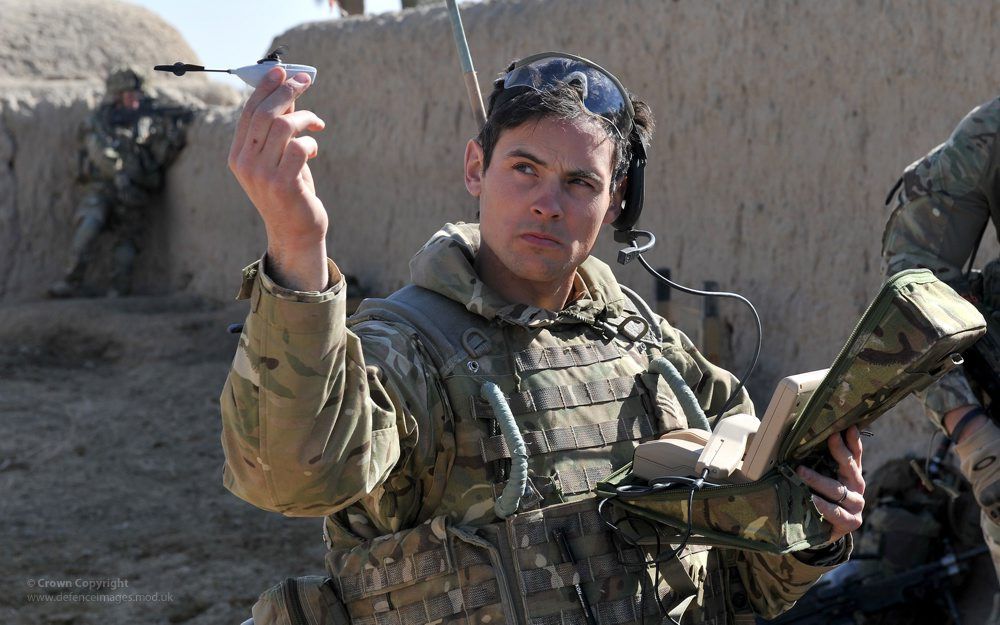
Certainly, they have not been issued generally.
Small UAS
More recently, the British Army has been trialling a few different models including the Bug, from BAE and UAV Tek.
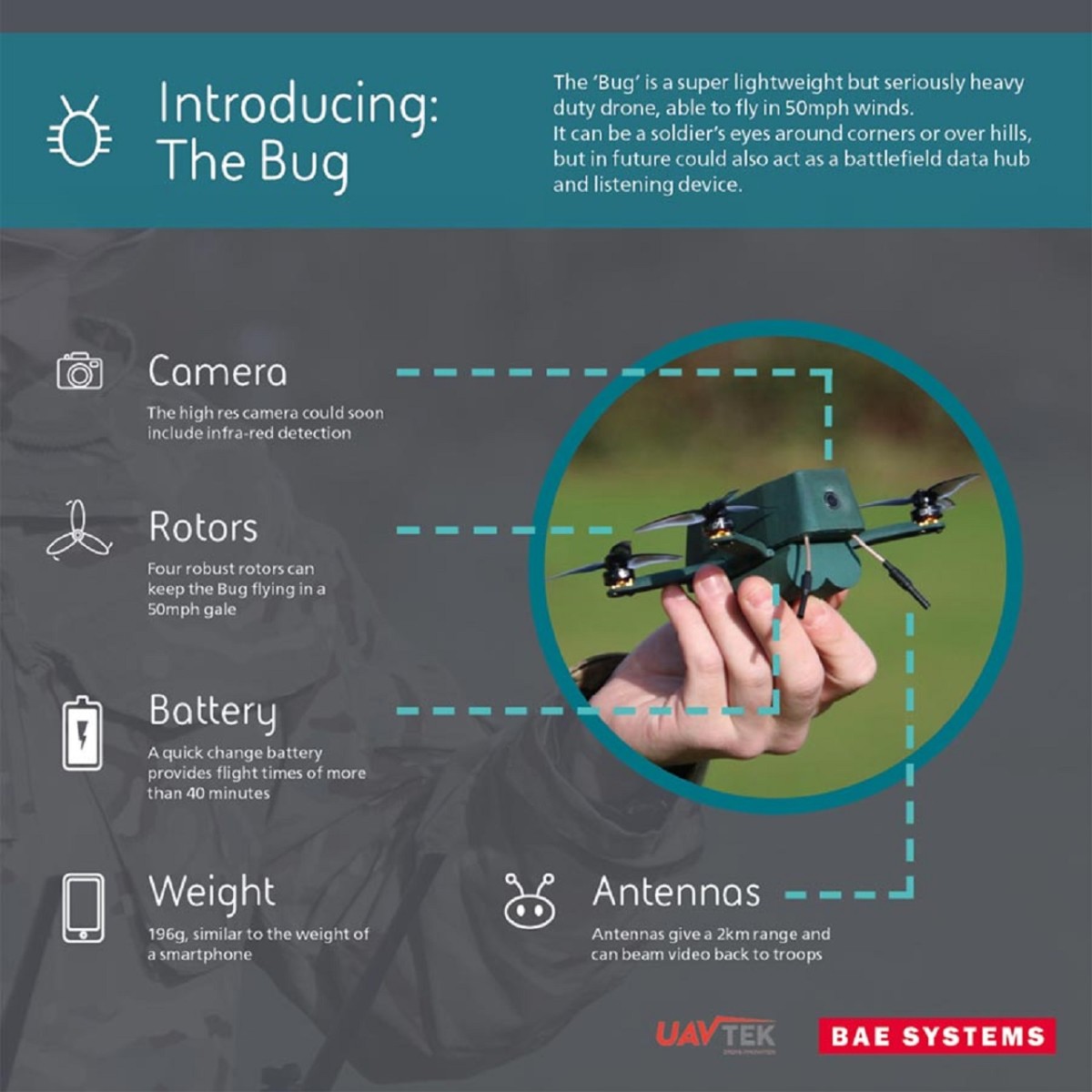
The Bug was reportedly much more wind resistant than the Black Hornet 3 and other comparable systems during trials, an important benefit.
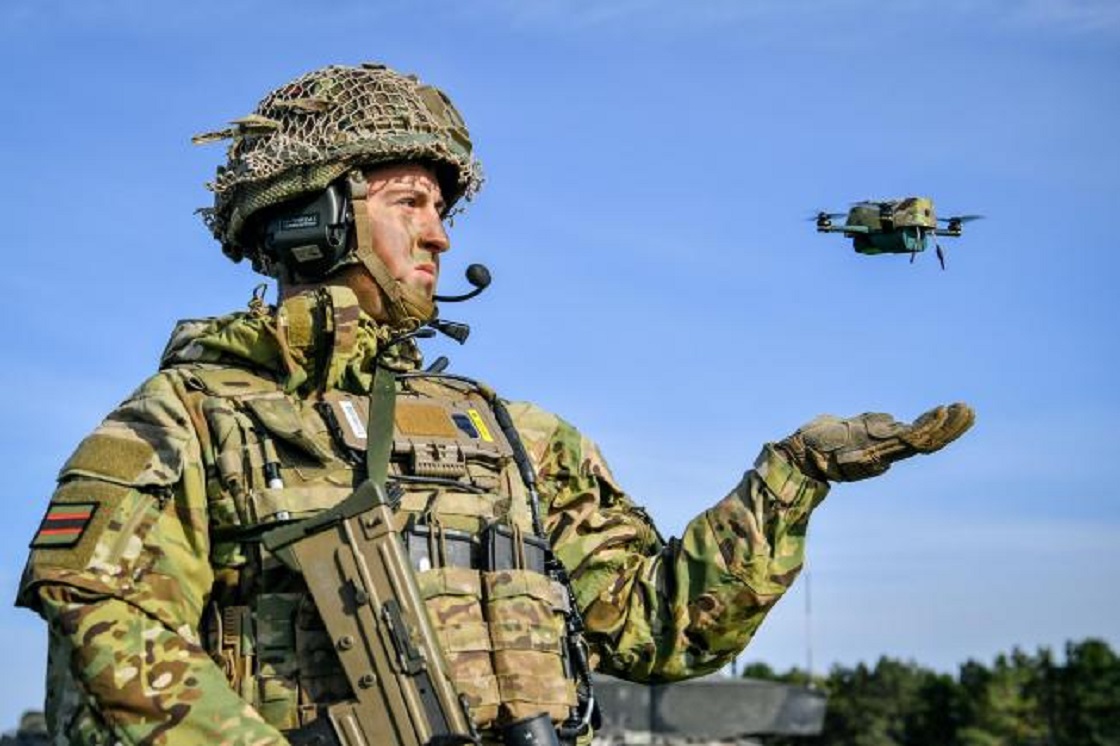
The Bug can stay aloft for 40 minutes, able to broadcast 1080p full-motion video to a range of 2 km, a range well suited to platoon-level operations.
The UAS itself is small and light, quiet and easy to use. The package consists of a carrying case, spare batteries, a controller and a couple of UAS.
I am not sure if these are still available though as the UAV Tek website is no longer online and their last Twitter activity was some time ago, but I think from images and video you can visualise them.
The AeroVironment Snipe is a comparable system, shown below in its case.
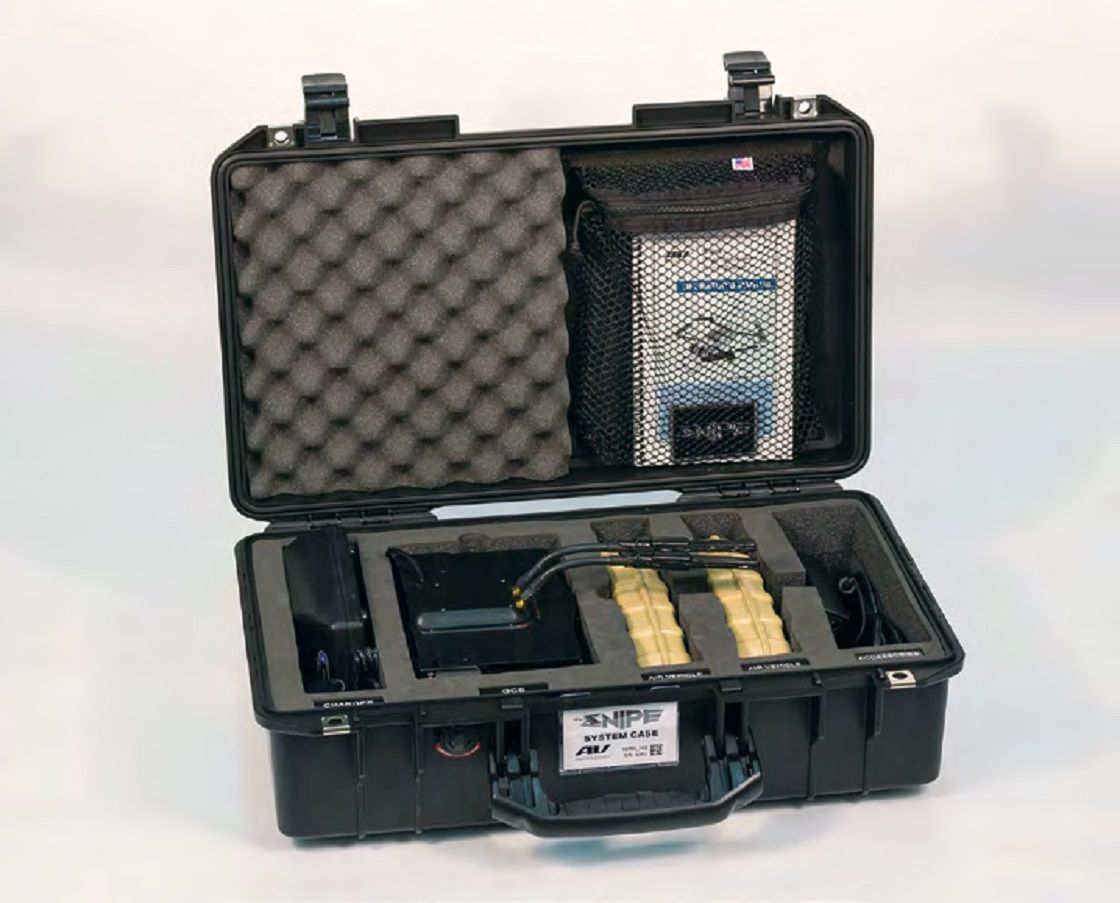
Another system recently trialled is the one from Defendex in Australia, the Drone 40
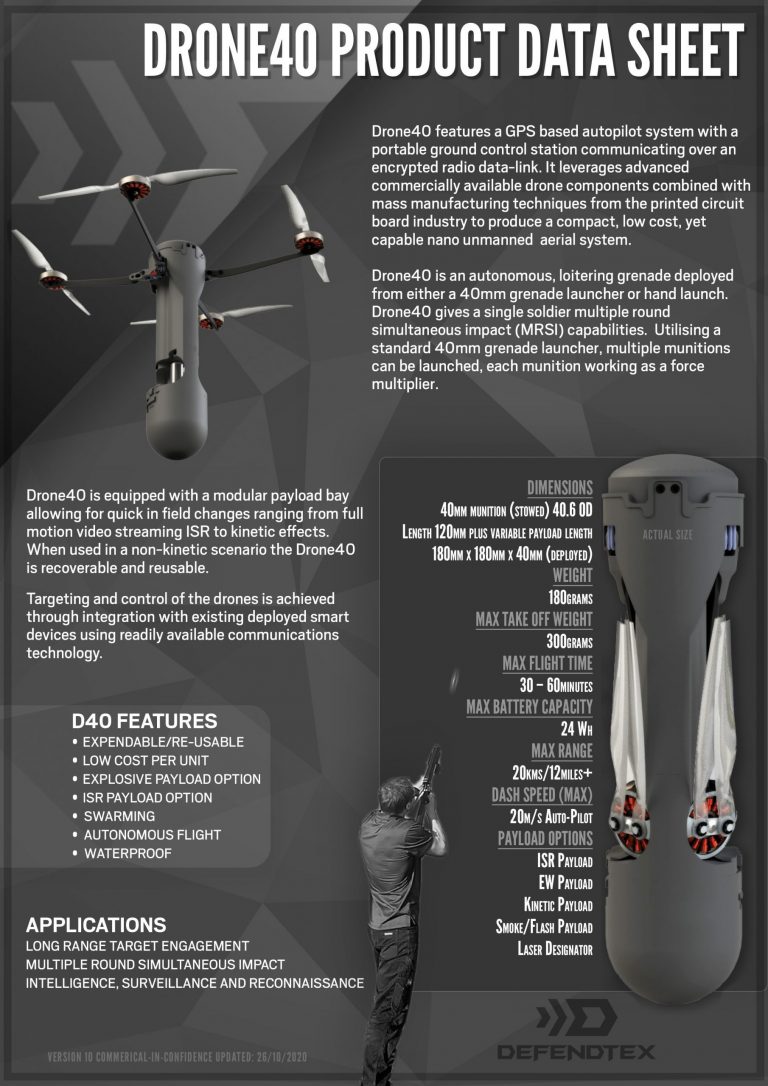
Drone 40 is designed as a modular system, able to accept lethal and ISR payloads.
Drone 40 has recently been used in Mali by the British Army, although without the lethal payload. Other payloads include Electronic Warfare, Smoke/Flash and a laser designator.
It certainly looks impressive, although not without competition from the Spear UAV Ninox 40.
Each of these three systems seems well suited to infantry platoon operations and the choice of carrying a warhead or not for two of the three is an added benefit.
Before reading on, would you mind if I brought this to your attention?
Think Defence is a hobby, a serious hobby, but a hobby nonetheless.
I want to avoid charging for content, but hosting fees, software subscriptions and other services add up, so to help me keep the show on the road, I ask that you support the site in any way you can. It is hugely appreciated.
Advertising
You might see Google adverts depending on where you are on the site, please click one if it interests you. I know they can be annoying, but they are the one thing that returns the most.
Make a Donation
Donations can be made at a third-party site called Ko_fi.

Think Defence Merch
Everything from a Brimstone sticker to a Bailey Bridge duvet cover, pop over to the Think Defence Merchandise Store at Red Bubble.
Some might be marked as ‘mature content’ because it is a firearm!
Affiliate Links
Amazon and the occasional product link might appear in the content, you know the drill, I get a small cut if you go on to make a purchase
Small Loitering Munitions
All of the above systems are based on multi-rotor designs.
Fixed-wing designs tend to have a longer range and larger warhead, and most designs have only limited re-arm and re-use capability.
Hero 30 and Warmate are good examples, although the AeroVironment Switchblade 300 is better known.
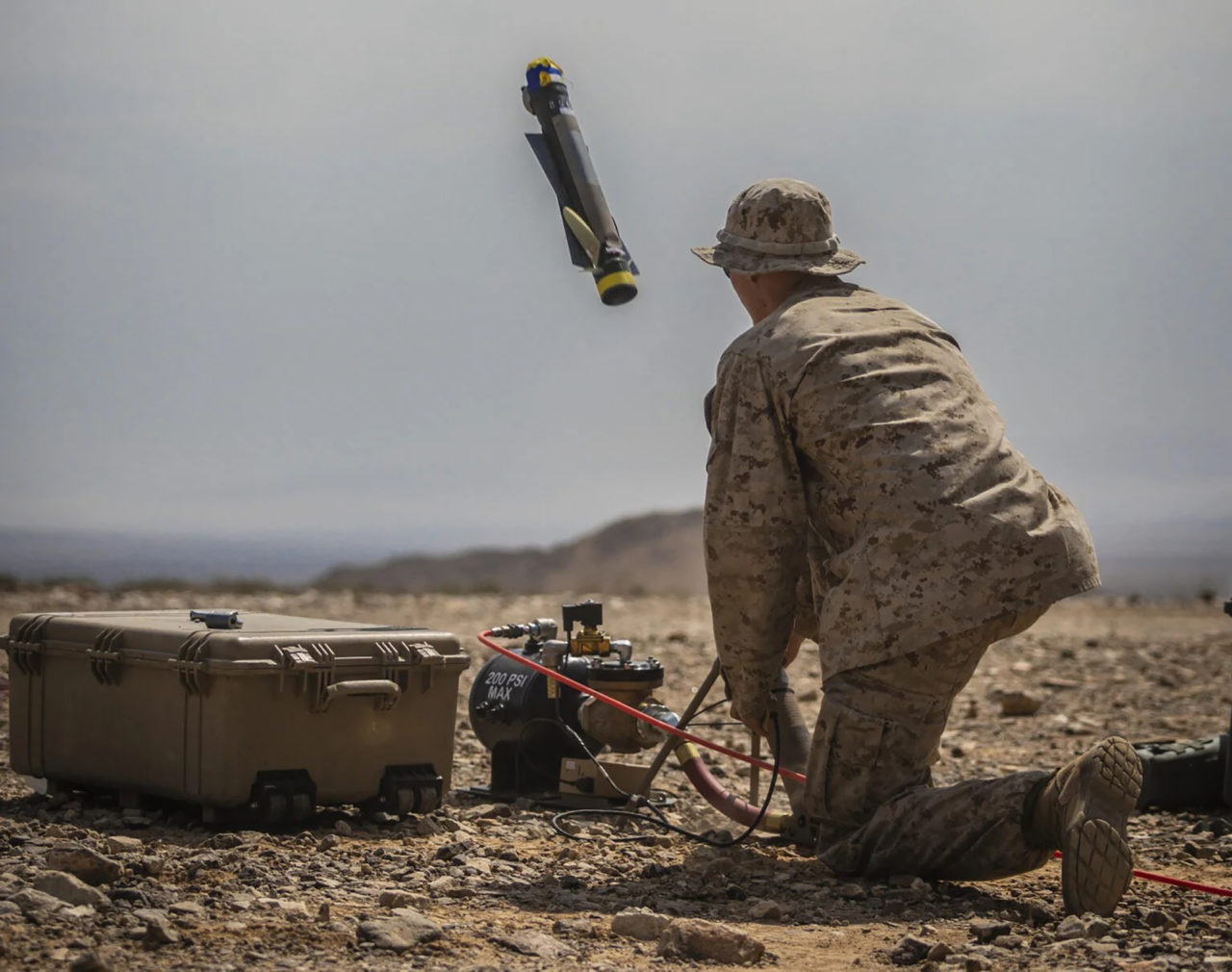
Switchblade 300 has a 15-minute endurance and 10 km range, although this is increased with the unarmed Blackwing variant.
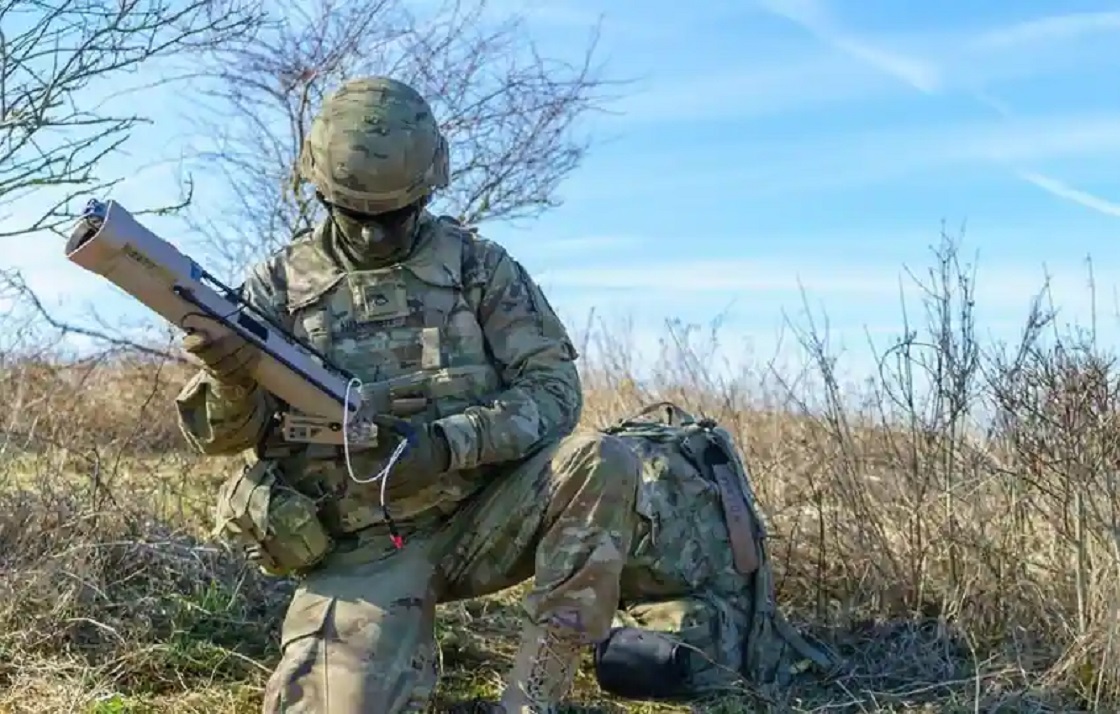
The warhead is reported of similar weight to a 40 mm grenade, suitable for soft skin vehicles and dismounted personnel.
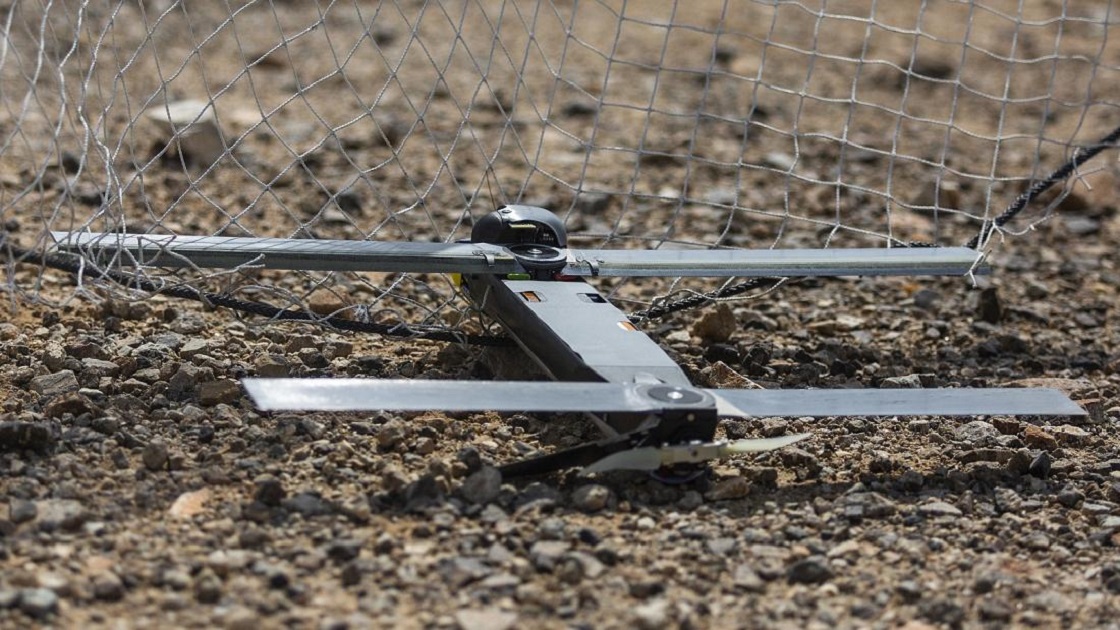
The Royal Marines have reportedly used these to great effect in recent trials.
As can be seen from the image of Hero 30 below, they are relatively bulky.
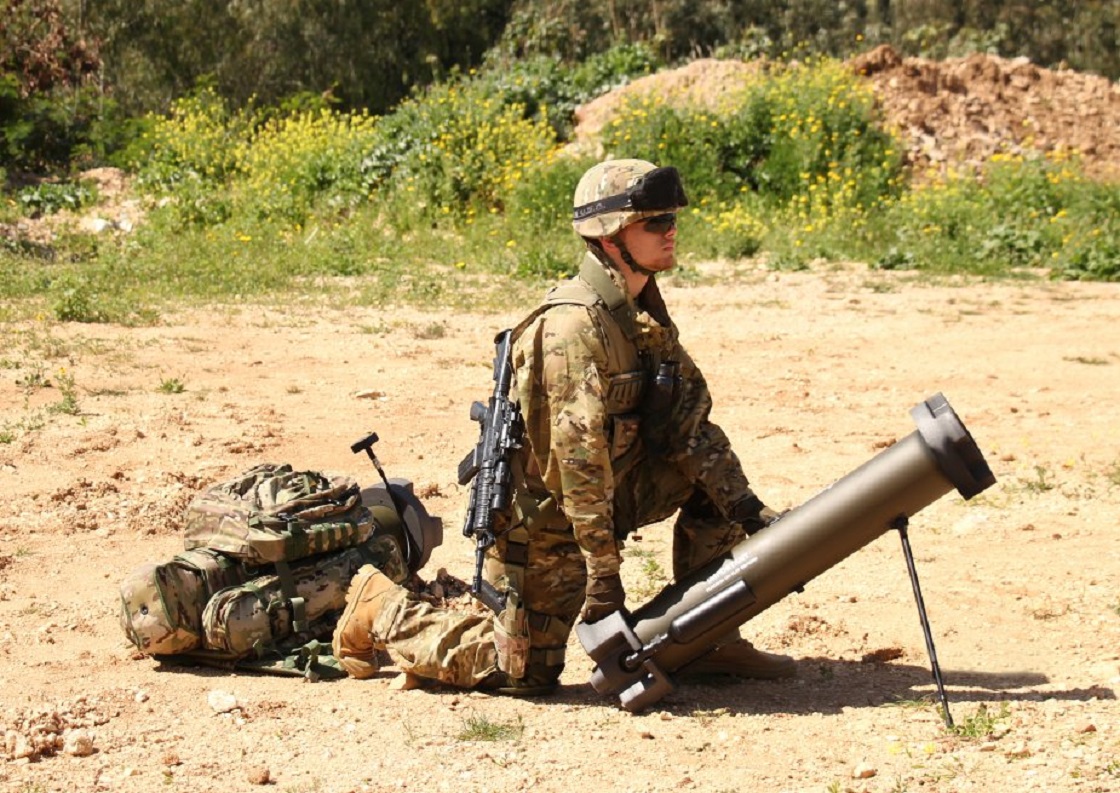
Perhaps one of the more interesting aspects of Switchblade 300 is its ability to be launched from a Multi-Pack Launcher
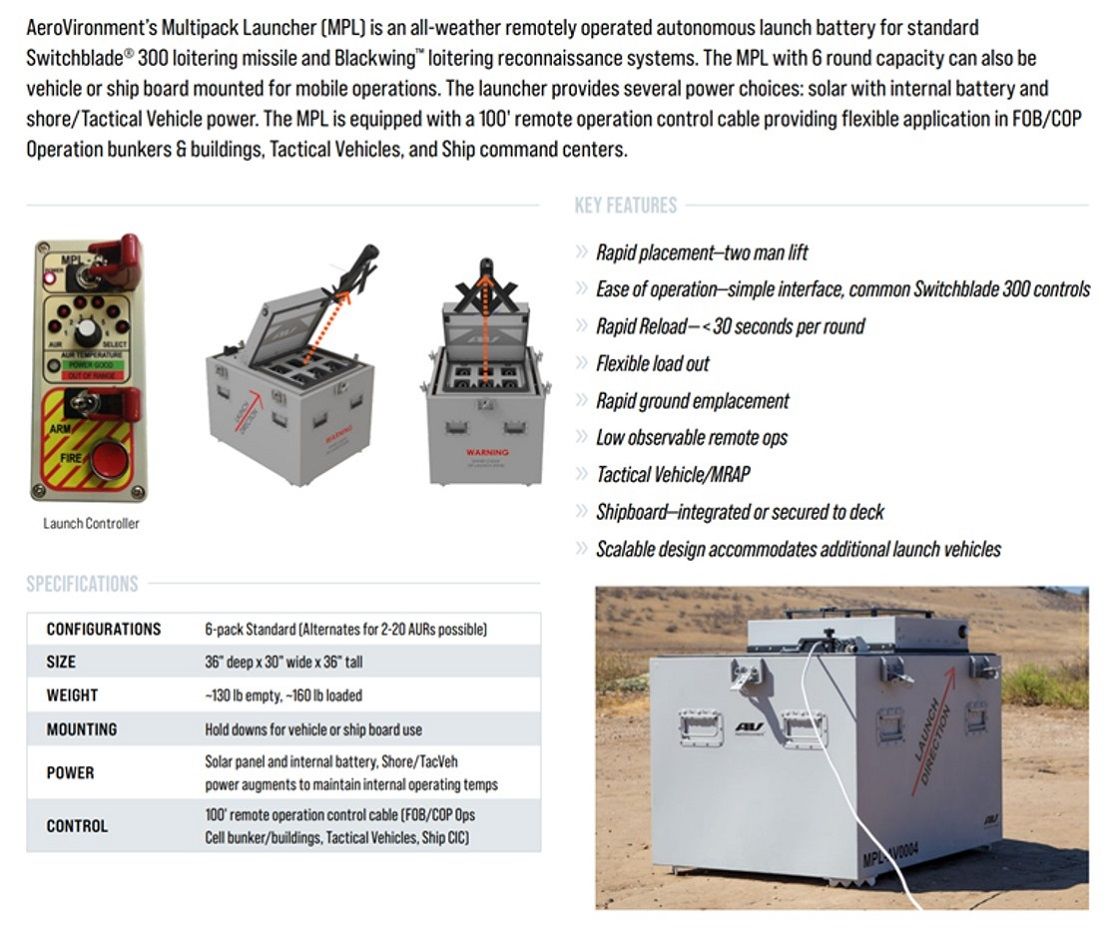
The MPL can carry up to 6 Switchblade 300 at a time and although liftable by two persons, probably has greater utility when vehicle-mounted or shipborne.
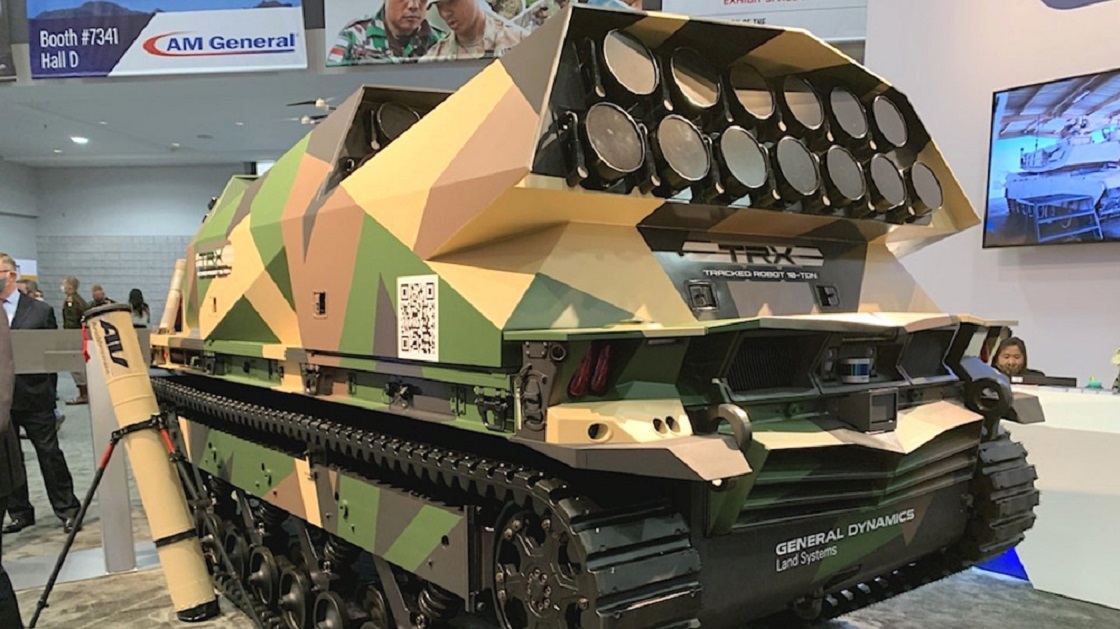
The video below shows the General Dynamics TRX with multiple launch boxes.
Other concepts for swarm launching are also coalescing around systems like the Switchblade 300, in the video below, the Raytheon Coyote
It is easy to appreciate how something like the Switchblade 300 has enormous potential, that the Royal Marines are aware of and hopefully, Ukrainian forces are fully exploiting if news reports are true.
A Few Thoughts
For light-role infantry, every litre of rucksack space and kilogram of weight has to earn its keep.
A small UAS would have to compete with extra link and more NLAW and the plethora of other things that fall into the ‘collective carry’ basket.
Any additional systems also have to be relevant to the role, consistent with procedures, able to be trained on in a crowded training calendar, and affordable to be widely issued.
This is why I think the fixed-wing canister launch loitering munitions do not apply to conventional light-role infantry.
For specialist users, certainly, as part of an integrated small craft and vehicle launched approach, absolutely, and for light role infantry at the Company level, yes.
But at platoon level.
No.
Far more applicable is a small UAS, like those described above.
Two or three can be carried, which provides resilience against loss from accidents or enemy action. Their weight and bulk are certainly an addition, but not prohibitively so.
However, besides costs, perhaps the main problem for these systems is cognitive overload and training burdens.
This might make a case for a slightly larger platoon HQ with a system operator role, they can carry the small UAS and receive specialist training in their use.
These systems do seem mature enough for wider adoption, now show me the money!
Read more (Affiliate Link)

Discover more from Think Defence
Subscribe to get the latest posts sent to your email.



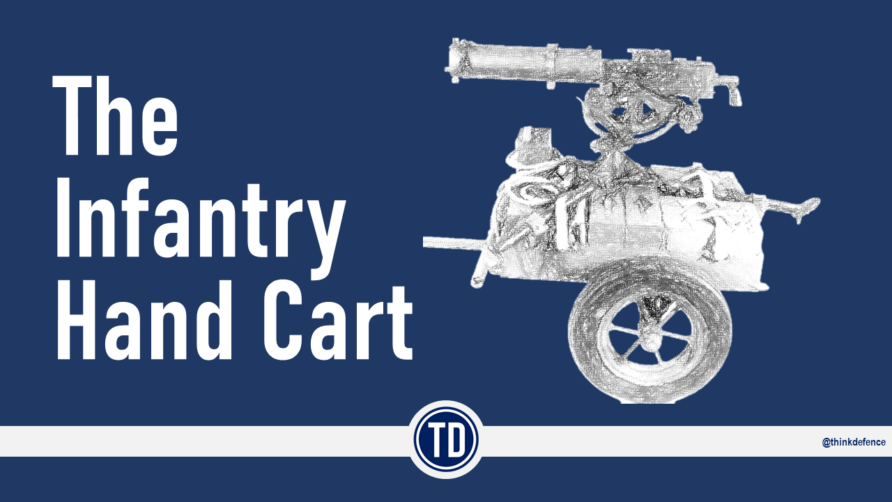
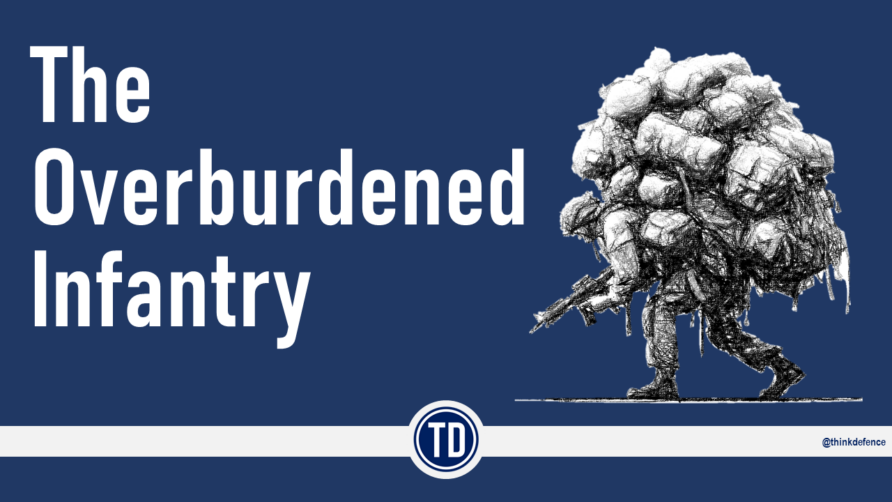
As ever a great & informative read. Thank you
Great article. I do think we need to start with the premise that all infantry are light and train accordingly.
They then pick the vehicle suitable for the role. As all infantry will need protection going forward, which is a contradiction.
In a smaller Army this is a good way of cycling through training up to ops and making every infanteer count.
Ultimately once you’ve dismounted the basics of light maneovre take over.
So vehicles are critical but we shouldn’t fix to a type, but rather flex to situation, which must be at the ground commanders behest.
A Polaris full of NLAW and switchblade may be more appropriate than a challenger, but the infantry principles are the same overall in the new world. Get in cause havoc and get out before you are fixed by the enemy
I think reconnaissance of drones should already precede the route of the squad. There is a fixed-wing drone that can be recovered.
https://www.the-sun.com/news/4694811/ukraine-punisher-drones-russian-forces-putin-invades/
There are many drones that can be used for military purposes
https://wingtra.com/mapping-drone-wingtraone/
https://www.atmosuav.com/
This is my favorite
https://www.youtube.com/watch?v=WlzBC2KupW4
A large size can carry 2/3 pounds, but the price is around 20 to 30 dollars. can ship it to a location where grenades are difficult to penetrate for less than $100
If raise the price to $200 (excluding development costs) and add a small board like Raspberry Pi and a small battery and camera, can be a weapon that can hit the engine of tanks and armored vehicles at low altitudes by fly (below 1 meter)
APS ,or ground suveilllence radar can’t detect or defence it.
But the problem is always money.
lol
I think the British military should be serious about drone technology that monitors and controls Battlegrounds.
Because one day, the inexpensive drone toy weapons that I thought, would be used by the enemy on the battlefield.
Higher levels of autonomy mean users can operate multiple drones and not be overloaded — see DARPA’s OFFSET — we are going to see a LOT of small and sometimes lethal drones.
Perch & stare may be more important that hovering. They may act as a picket line of UGS, but with impressive new capabilities. Some thoughtds on where the tech is going https://www.youtube.com/watch?v=DmnjC9JhHPw
Thanks for the Brilliant Articles. even I’m civilian with hobbies in military.
so use Mirco UACV for inside building and outside use Mini UAV
I thought Switchblade 300 / 600 is perfect for it, as Surveyor of the area, and recon, attack if urgent threat; if not urgent carry on the mission, once near loiter time complete and recovery it.
Re-used again with swap battery and launch to aerial again. Empty battery to recharge ready for next re-charger.
Another option is to a primary focus on Aeronautics Defense Orbiter 3 as they can have 7 hours loiter time. with Support Brimstone 3 NLOS / Spear 3 NLOS.
So we move to Rapid Reaction Force; this perfect system.
The strategy will be better if we use; a full battalion with Polazied Alpha D4 fast move around to key point and better defence, regroup or move to advanced to trap or ambush, sneak into deep and set up the attack with the NLAW for hiding in urban or woodland / Switchblade 300 & 600 / MMP (Replace javelin as MMP due to NLOS or Direct fire or over the top attack) ability so once fire over the hill or building, hide behind a no-line of sight that connects to Orbiter 3 for the Laser designator to destroy Target ie MBT as Orbiter 3 on around of the support force.
with Supacat coyote with Hawkeyes 105mm with Laser & GPS Artillery for supporting them.
Hope the British army has better equipment for future warfare.
Update; Orbiter 4 * as don’t reliese they are been updated to version 4 and wrong spelling – Polaris Alpha D4